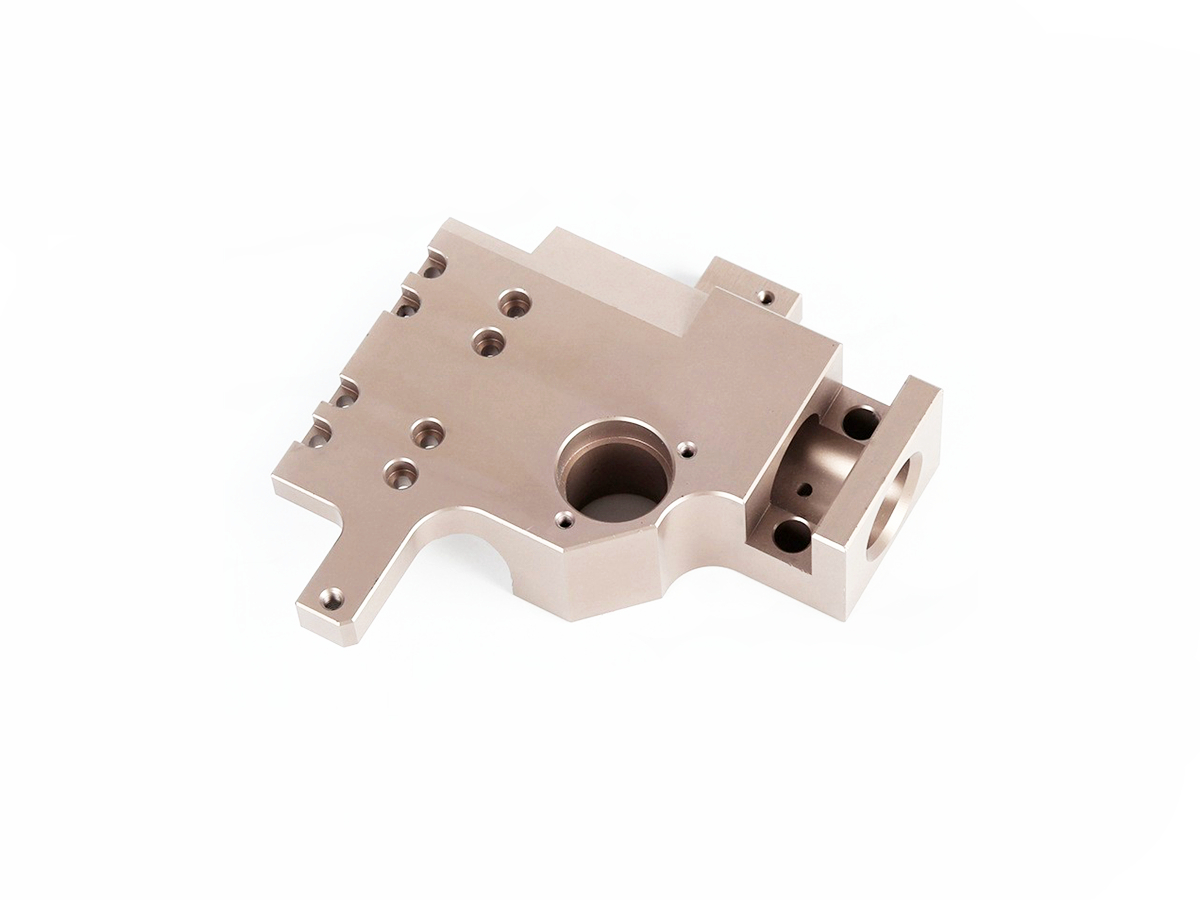Complete CNC Machining Solutions for Titanium: From Prototyping to Full-Scale Production
Introduction
Complete CNC machining solutions for titanium offer a comprehensive, reliable approach to manufacturing precision parts for the aerospace, medical, automotive, and energy industries. Titanium alloys, such as Ti-6Al-4V, Ti-6Al-2Sn-4Zr-6Mo, and Ti-5Al-2.5Sn, are known for their exceptional strength-to-weight ratio, corrosion resistance, and ability to withstand extreme temperatures. By leveraging Titanium CNC Machining, manufacturers can produce high-performance components that meet the stringent requirements of critical applications.
From rapid prototyping to full-scale production, CNC machining allows for fast and precise manufacturing of titanium parts, ensuring consistency, high-quality finishes, and tight tolerances. Mass Production CNC Machining is essential for industries that need high-volume, cost-effective production of titanium parts while maintaining superior quality and performance.
Titanium Material Properties
Material Performance Comparison Table
Titanium Alloy | Tensile Strength (MPa) | Yield Strength (MPa) | Hardness (HRC) | Density (g/cm³) | Applications | Advantages |
|---|---|---|---|---|---|---|
900–1100 | 830–1000 | 36–40 | 4.43 | Aerospace, medical implants | High strength, excellent fatigue resistance | |
850–1000 | 760–900 | 30–40 | 4.48 | Aerospace, marine applications | Excellent corrosion resistance, good weldability | |
850–1000 | 750–880 | 30–40 | 4.43 | Automotive, military | High strength-to-weight ratio, good performance at high temperatures | |
800–950 | 620–820 | 30–40 | 4.44 | Aerospace, industrial parts | Good fatigue resistance, weldable |
Selecting the Right Titanium Alloy for CNC Machining
The choice of titanium alloy plays a critical role in ensuring that parts meet the necessary strength, fatigue resistance, and corrosion resistance for various industries:
Ti-6Al-4V (Grade 5): Ideal for aerospace components, medical implants, and automotive parts due to its high strength, fatigue resistance, and ability to perform in demanding environments.
Ti-6Al-2Sn-4Zr-6Mo (Grade 7): Best suited for aerospace and marine applications where superior corrosion resistance is required, such as parts exposed to harsh environments like seawater.
Ti-5Al-2.5Sn: Recommended for automotive and military applications requiring a high strength-to-weight ratio, high-temperature performance, and durability in extreme conditions.
Ti-6Al-2Sn-4Zr-6Mo (Grade 9): Suitable for aerospace and industrial components, providing good fatigue resistance and the ability to perform under high mechanical stresses.
CNC Machining Processes for Titanium Parts
CNC Process Comparison Table
CNC Machining Process | Accuracy (mm) | Surface Finish (Ra µm) | Typical Uses | Advantages |
|---|---|---|---|---|
±0.005 | 0.4–1.6 | Aerospace, automotive parts | High precision, versatile for complex shapes | |
±0.005 | 0.4–1.0 | Shafts, pins, cylindrical parts | High consistency, excellent for cylindrical components | |
±0.01 | 0.8–3.2 | Holes, threaded components | Fast, precise hole-making | |
±0.003 | 0.2–1.0 | Complex geometries | High precision, reduced production steps |
CNC Process Selection Strategy
The selection of the appropriate CNC machining process for titanium parts depends on the complexity of the part, the precision required, and the material properties:
CNC Milling: Best suited for creating complex, high-precision titanium components such as aerospace parts, engine components, and medical implants. This process provides high accuracy (±0.005 mm) and is ideal for intricate geometries.
CNC Turning: Ideal for cylindrical titanium parts such as shafts and pins, offering high accuracy (±0.005 mm) and consistent surface finishes (Ra ≤1.0 µm).
CNC Drilling: Perfect for creating precise holes, threads, and fastener holes in titanium components, with fast hole-making capabilities and accuracy (±0.01 mm).
Multi-Axis Machining: Suitable for machining complex titanium parts that require multi-directional features, offering superior precision (±0.003 mm) and reducing the number of machining steps.
Surface Treatments for Titanium Parts
Surface Treatment Comparison Table
Treatment Method | Surface Roughness (Ra µm) | Corrosion Resistance | Max Temp (°C) | Applications | Key Features |
|---|---|---|---|---|---|
≤1.0 | Excellent | 400 | Aerospace, medical implants | Enhanced corrosion resistance, improved wear resistance | |
≤1.0 | Excellent | 450–600 | Aerospace, automotive parts | Increased hardness, wear resistance | |
≤0.4 | Excellent | 250 | Aerospace, medical parts | Smooth surface, enhanced corrosion resistance | |
≤1.0 | Excellent | 250 | Medical devices, food processing parts | Improved corrosion resistance, extended lifespan |
Surface Treatment Selection Strategy
Surface treatments for titanium parts are crucial to improving their durability, corrosion resistance, and performance in high-stress aerospace environments:
Anodizing: Best suited for aerospace and medical implant components, providing enhanced corrosion resistance, increased wear resistance, and improved surface durability.
PVD Coating: Ideal for aerospace and automotive parts requiring increased hardness and wear resistance to perform under high temperatures and mechanical stresses.
Electropolishing: Suitable for parts exposed to harsh environments, such as aerospace components and medical devices, providing a smooth surface finish and enhanced corrosion resistance.
Passivation: Recommended for medical devices and food processing components, passivation improves corrosion resistance, ensuring long-lasting performance in demanding applications.
Typical Titanium Rapid Prototyping Methods
Effective prototyping methods for titanium parts include:
CNC Machining Prototyping: Provides fast, high-precision production of titanium parts for small batches and testing, ideal for the aerospace industry.
Titanium 3D Printing: Ideal for producing complex titanium components and rapid design iterations, enabling quick changes before full-scale production.
Rapid Molding Prototyping: Cost-effective for creating medium-complexity titanium parts before moving to full production volumes.
Quality Assurance Procedures
Dimensional Inspection: ±0.002 mm accuracy (ISO 10360-2).
Material Verification: ASTM B348, ASTM F136 standards for titanium alloys.
Surface Finish Assessment: ISO 4287.
Mechanical Testing: ASTM E8 for tensile and yield strength.
Visual Inspection: ISO 2768 standards.
ISO 9001 Quality Management System: Ensuring consistent quality and performance.
Key Applications
Aerospace: Turbine blades, engine parts, structural components.
Medical Devices: Implants, surgical tools, diagnostic equipment.
Automotive: High-performance engine parts, exhaust systems.
Energy: Heat exchangers, turbine components.
Related FAQs:
Why is CNC machining ideal for titanium aerospace components?
What titanium alloys best suit CNC machining in aerospace and medical applications?
How do surface treatments improve the performance of titanium parts?
What are the advantages of CNC machining for titanium parts in high-performance industries?
How does low-volume CNC machining support prototyping for titanium components?

